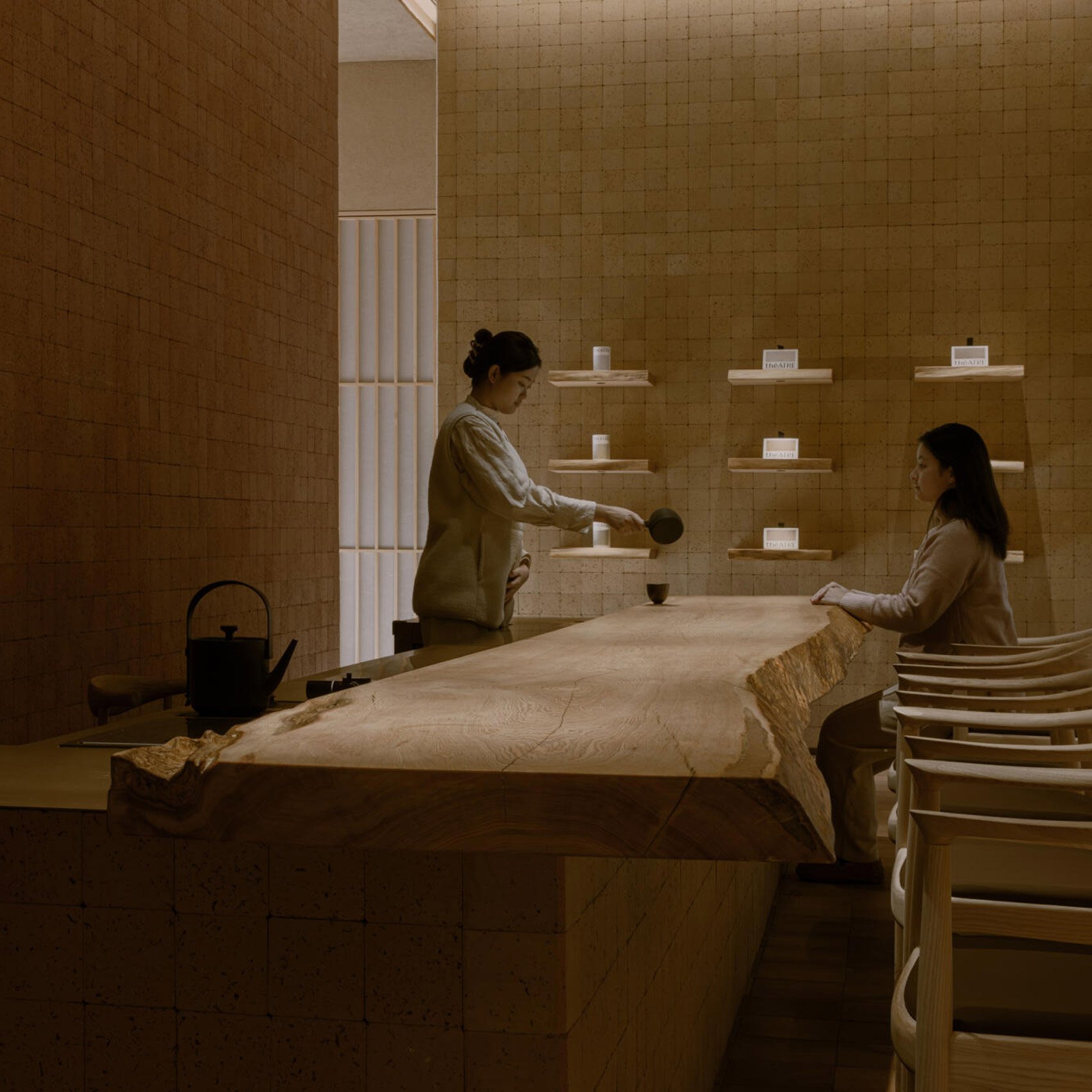Japanese studio Kooo Architects used custom-made bricks that mix compressed earth with waste tea leaves to create a pure really feel contained in the Théatre teashop in Beijing.
The shop positioned in Beijing’s central enterprise district belongs to Chinese language model Théatre, which needed to immerse company within the tea-drinking expertise.
Kooo Architects created a multi-sensory house that includes tactile, pure supplies that contribute to the shop’s calming environment.
“By way of an built-in expertise of the house and tea merchandise, this challenge goals to turn into a ‘mountain getaway’ the place folks can escape the busy metropolis and discover inside peace,” the architects defined.
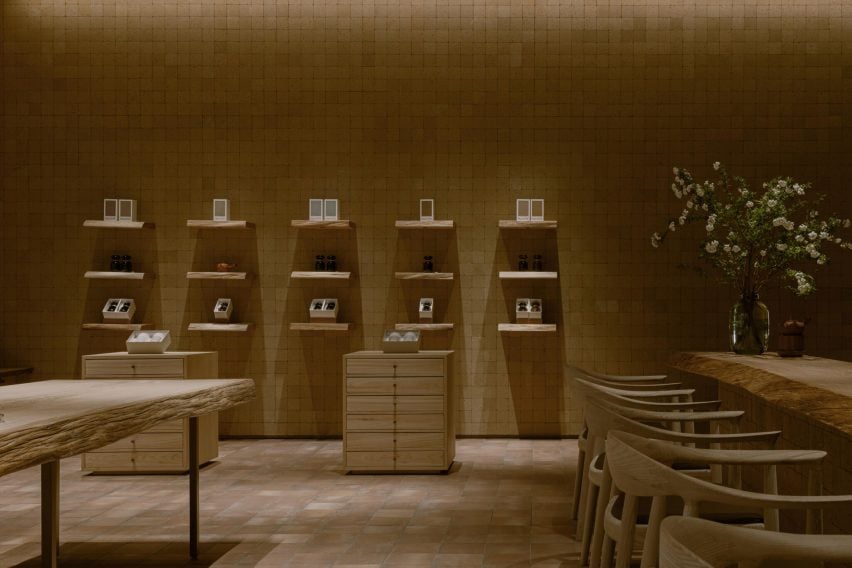
In an effort to include tea itself into the inside design, Kooo Architects labored with Beijing-based Onearthstudio to develop a “tea-earth brick” that’s used to clad 80 per cent of the shop’s partitions.
The bricks are moulded in a manufacturing unit utilizing an analogous course of to the way in which rammed earth buildings are constructed. This low-carbon course of leads to an environmentally affable and non-toxic materials with a variety of pure colors.
Kooo Architects examined completely different soil sorts and tea varieties to realize a spread of tones and textures for the bricks while sustaining the required energy within the materials.
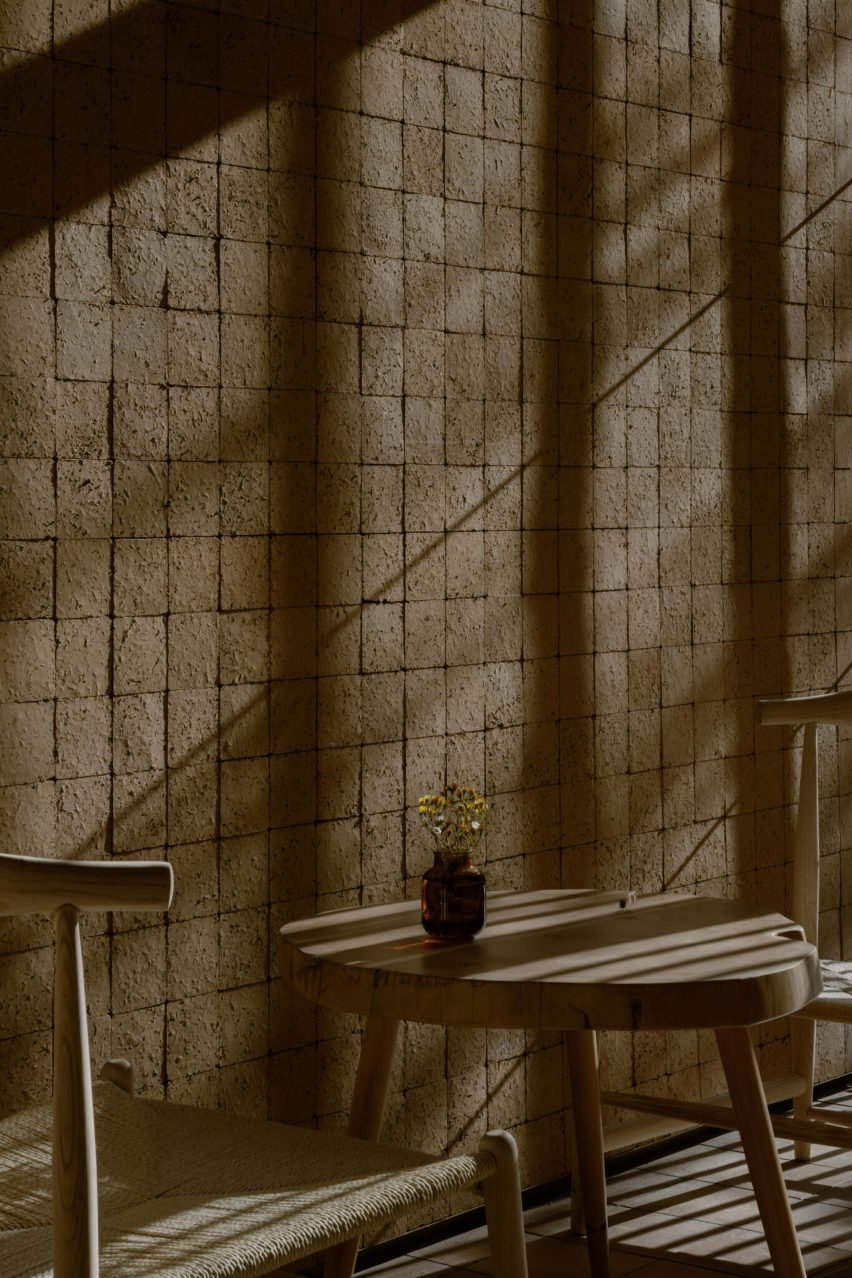
The leaves used are leftovers from tea manufacturing that might in any other case be discarded as waste. The crumbled tea leaves create a textured floor that may be seen from up shut, whereas the assembled bricks show pure tonal variations when considered from a distance.
The bricks for this challenge have been produced with compact dimensions of 10 by 10 by three centimetres, making them appropriate for cladding partitions, doorways and furnishings.
“[The brick] turns into the essential module for house structure and furnishings sizes, so the whole lot is regulated neat and peaceable to the attention,” stated Kooo Architects. “We additionally made a particular L-shape module for the corners so it wraps round easily.”
A purple model of the bricks was chosen for a vast quantity that types a focus inside the house, whereas the encircling partitions function a extra muted yellow tone that contributes to the enjoyable really feel.
The bricks have been additionally used to create a lintel for the principle facade, with folding home windows and doorways permitting the shop to be opened up fully to the surface.
Internally, the house is organised into completely different purposeful zones, with a airy gross sales show space and serving counter positioned inside the doorway.
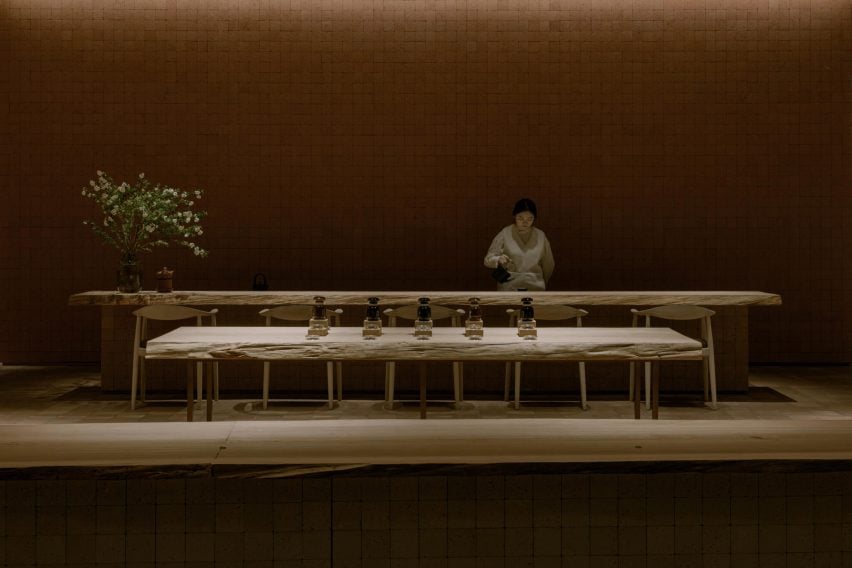
Cabinets and counters organized at completely different heights are used to show the varied merchandise whereas drawers containing samples enable clients to study various kinds of tea and scent the distinct aromas.
Tea ceremonies are carried out at a bar that’s decrease than typical espresso counters with a purpose to present a extra comfy expertise. The bar and different furnishings parts are topped with waney-edged wooden that contributes to the house’s pure appear and feel.
To the rear of the shop is a non-public lounge space and a VIP tea room formed like a classic tea home with an uncovered pitched ceiling. Accessed via a darker preparation space, the naturally lit house is softened by the applying of a textured render on the partitions and ceiling.
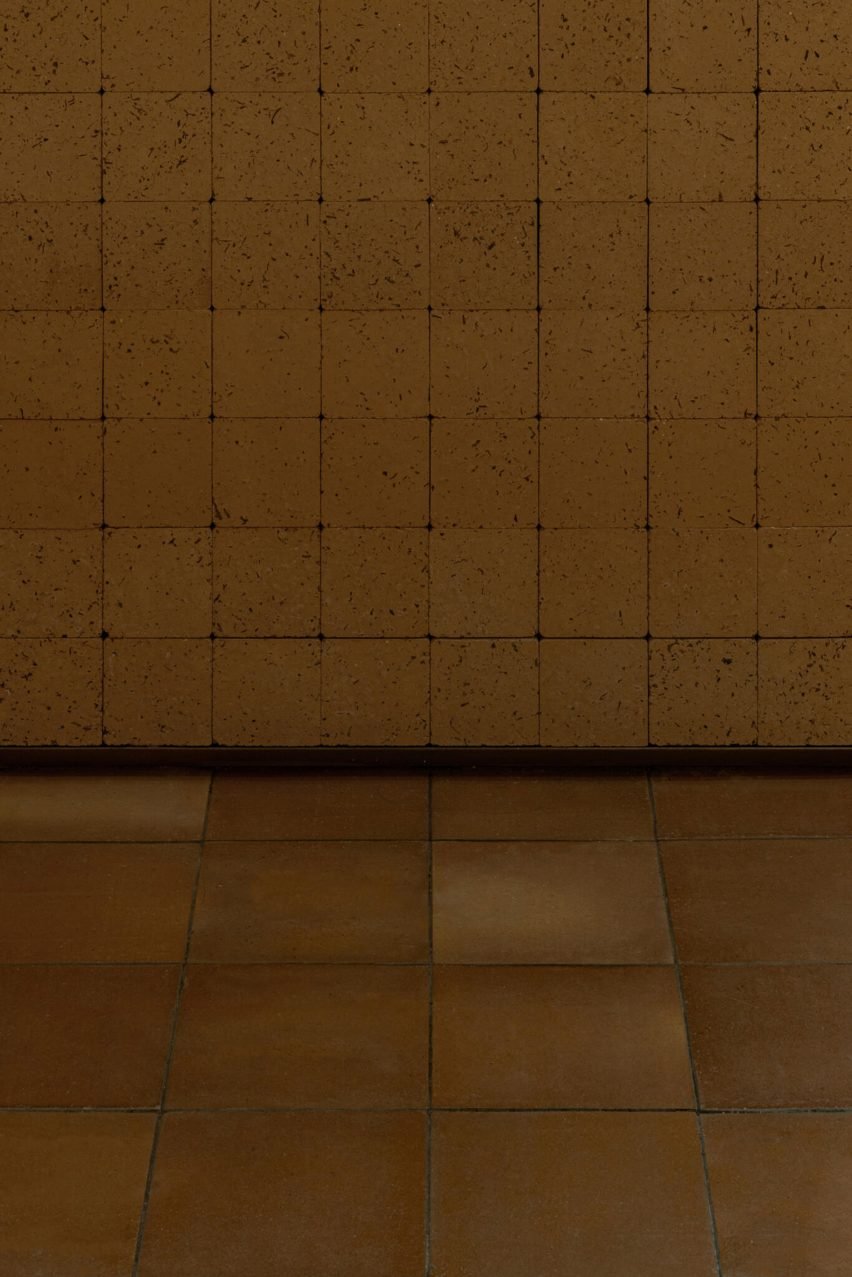
When the store is ultimately overhauled – as retail interiors solely final for round three to 5 years – the bricks may be taken down and reprocessed for exploit in future shops or return to nature.
The tea-earth bricks have been shortlisted within the sustainable constructing product class on the 2024 Dezeen Awards, alongside tasks together with pure stone bricks that have been used to create a ephemeral shelter in central London.
Kooo Architects was based in 2015 by Ayaka and Shinya Kojima and has workplaces in Tokyo and Beijing. Its earlier tasks embody a thin resort with cutout balconies in central Tokyo and a resort in rural China that’s designed to enhance the encircling vernacular structure.


